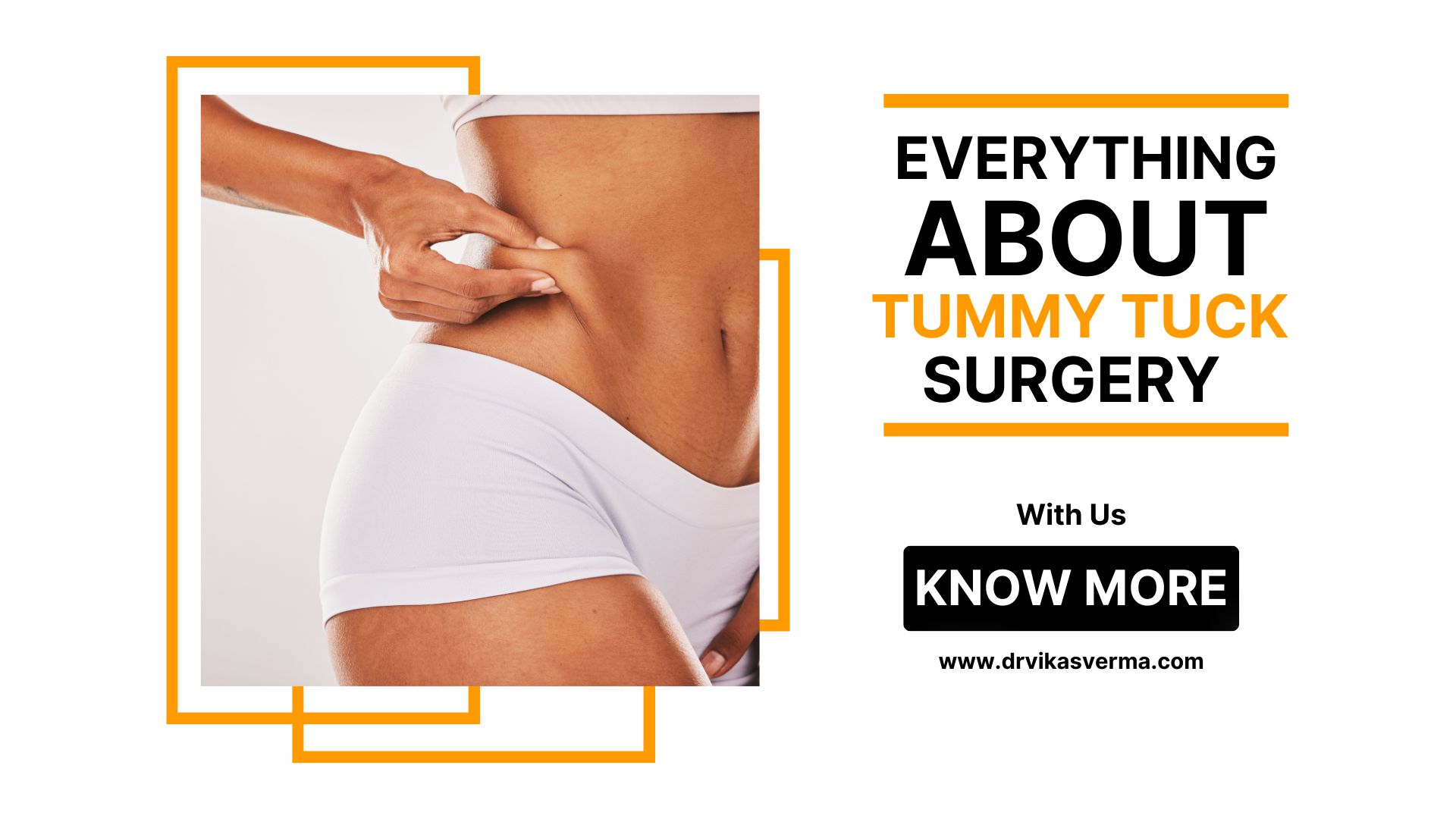Are you considering a tummy tuck? Also known as abdominoplasty, this cosmetic procedure has gained popularity over the years for its transformative effects on the abdomen. However, before you make any decisions, it’s crucial to understand the ins and outs of the procedure, its benefits, risks, and what to expect during the recovery process.
In this comprehensive guide, we’ll go into everything you need to know about tummy tucks, with insights from Dr. Vikas Verma, a renowned plastic surgeon based in the UAE.
What is a Tummy Tuck?
A tummy tuck is a surgical procedure aimed at improving the appearance of the abdomen by removing excess skin and fat, and tightening the abdominal muscles. This results in a smoother, firmer, and more toned midsection.
Tummy tucks are particularly popular among individuals who have undergone significant weight loss, experienced pregnancy, or simply struggle with stubborn abdominal fat and laxity that cannot be addressed through diet and exercise alone.
Types of Tummy Tucks
There are several types of tummy tucks, each tailored to address specific concerns and goals:
-
Traditional or Full Tummy Tuck: This involves an incision made horizontally between the hip bones, typically extending from one hip to the other. Excess skin and fat are removed, and the abdominal muscles are tightened. This procedure is ideal for individuals with significant excess skin and muscle laxity.
-
Mini Tummy Tuck: A mini tummy tuck is a less invasive option, involving a smaller incision and focusing primarily on the lower abdomen. It’s suitable for individuals with mild to moderate skin laxity and fat deposits below the belly button.
-
Extended Tummy Tuck: This procedure is similar to a traditional tummy tuck but involves a longer incision that extends beyond the hip bones. It’s beneficial for patients who have excess skin and fat not only in the abdomen but also on the flanks or lower back.
-
Fleur-de-Lis Tummy Tuck: This variation is recommended for patients who have undergone massive weight loss, often after bariatric surgery. It involves a vertical incision in addition to the horizontal incision used in a traditional tummy tuck, allowing for greater removal of excess skin and tissue.
Benefits of a Tummy Tuck
- Improved Abdominal Contour: A tummy tuck can significantly enhance the appearance of the abdomen, creating a flatter, more toned contour.
- Correction of Muscle Separation: Pregnancy or significant weight fluctuations can lead to diastasis recti, where the abdominal muscles separate. A tummy tuck can repair this separation, restoring core strength and stability.
- Enhanced Confidence: Many patients experience a boost in self-esteem and body confidence following a tummy tuck, as they feel more comfortable and satisfied with their appearance.
Risks and Considerations
Like any surgical procedure, tummy tucks carry certain risks and considerations, including:
- Scarring: While efforts are made to minimize scarring, tummy tuck surgery does result in permanent scars, which typically fade over time but may remain visible.
- Infection: As with any surgery, there is a risk of infection. Following post-operative care instructions diligently can help mitigate this risk.
- Blood Clots: Patients undergoing tummy tuck surgery are at risk of developing blood clots, particularly in the legs. Moving around as soon as possible after surgery and wearing compression garments can reduce this risk.
- Numbness or Changes in Sensation: Some patients may experience temporary or permanent numbness or changes in sensation around the incision site.
The Tummy Tuck Procedure
Before undergoing a tummy tuck, patients will have a consultation with Dr. Vikas Verma to discuss their goals, medical history, and any concerns they may have. Once cleared for surgery, the procedure typically follows these steps:
- Anesthesia: Patients are placed under either general anesthesia or intravenous sedation, depending on the extent of the procedure and the surgeon’s recommendation.
- Incision: The appropriate incision pattern is made, depending on the type of tummy tuck being performed.
- Tissue Removal and Muscle Repair: Excess skin and fat are removed, and the underlying abdominal muscles are tightened and sutured into place.
- Skin Closure: The incisions are closed with sutures, and drains may be inserted to prevent fluid buildup.
- Recovery: Patients are monitored as they recover from anesthesia and may be discharged the same day or after a short hospital stay, depending on the extent of the surgery.
Recovery and Aftercare
The recovery period following a tummy tuck varies from patient to patient but generally involves:
- Rest and Limited Activity: Patients are advised to rest and avoid strenuous activities for several weeks following surgery.
- Compression Garments: Wearing compression garments can help reduce swelling and support the healing process.
- Follow-Up Appointments: Patients will have follow-up appointments with Dr. Vikas Verma to monitor their progress and address any concerns.
- Scar Care: Proper scar care techniques, such as keeping the incision site clean and moisturized, can help minimize scarring.
Final Thoughts
A tummy tuck can be a life-changing procedure for individuals looking to achieve a firmer, more toned abdomen. However, it’s essential to approach the decision with careful consideration and realistic expectations.
Consulting with a board-certified plastic surgeon like Dr. Vikas Verma is the first step towards determining whether a tummy tuck is the right option for you. With proper preparation, guidance, and post-operative care, you can enjoy the transformative benefits of a tummy tuck and embrace a newfound sense of confidence and self-assurance.
Remember, your journey to a better you starts with a single consultation. If you’re considering a tummy tuck or any other cosmetic procedure, don’t hesitate to reach out to Dr. Vikas Verma and his expert team for personalized advice and exceptional care.
